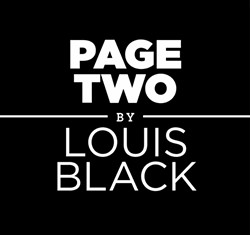Page Two: The Heroic and the Holy
'Grindhouse' squeezes transcendent kicks from a classic form
By Louis Black, Fri., April 6, 2007

One day I was hanging out at the offices of CinemaTexas, which at the time was a grad-student-run film society, feeling typically lost. Ed Lowry, the organization's director, suggested I might think about going to the drive-in theatre that night to see Caged Heat, a film he thought I might enjoy. He offered that Brian Mitchell, a high school friend of his (there was a gang of them who still hung out together at UT), might want to go as well. Although I really didn't know Brian, he was up for it, so we went. Ed hadn't said much about the movie, so I wasn't really sure why he was recommending it.
Right before moving to Austin, I had been living in Boston. There I had really come to hate Stuart Byron, the film editor and a reviewer and columnist for The Real Paper, one of Boston's two alternative weeklies. He treated low-budget releases, gay films, pornography, edgy foreign films, and the like with the same regard as he did mainstream works. He loved Fassbinder, for example, whose films sounded unbearably too outside to me; at the same time, he quite seriously reviewed drive-in exploitation films. Still hung up on high art as being the only aesthetic, I regarded any attempt to scale its walls, demystify it, or ignore it as an attack – an anti-humanist, anti-art, cold-blooded celebration of nihilism.
Every week, I would go out of my way to find the new edition of The Real Paper. His reviews were the first things I read upon picking it up; I marveled at his stupidity and cherished my superior taste as I mentally bested him for days, pointing out the terrible flaws in his opinions while restating the brilliance in mine. If his work wasn't in the paper that week or contained nothing too outrageous, I was disappointed.
In order to hate him more precisely and perfectly, I started going to see the movies he liked. Porn was out, and Fassbinder didn't sound like my cup of tea, so I tackled the exploitation releases showing at Austin-area grind houses. Over the course of months, I saw maybe a half-dozen films. Not one of them was by any means a classic, but, surprisingly, they were pretty much fun. On the basis of both the review and the title, I looked forward in particular to Mark Lester's Truck Stop Women. The movie was amusing but disappointing, in that it was very much what I was expecting, not that well-made or acted, with a pretty dumb plot. It certainly didn't live up to its title. By the time Lowry suggested Caged Heat, this experiment in moviegoing was mostly forgotten.
Caged Heat, a women-in-prison, drive-in exploitation film released in 1974, was Jonathan Demme's directorial debut and was produced by Roger Corman's New World Pictures. As was common with these movies, it was still playing the circuit years later. This was the first New World Picture or modern women-in-prison movie (post Jack Hill's Big Doll House in 1971) I was to see.
By the end of Caged Heat, Brian and I were both half out of the car's windows, leaning into the night, pounding on the roof while wildly cheering! Several escaped women prisoners, the film's protagonists, had returned to the prison to rescue some women who were still there. They got the women out of the prison and were heading toward the entrance in a stolen prison van when they ran into an ambush set up by the all-male prison guards (the warden and assistant warden were women). A shoot-out ensued. Every shot fired by one of the guards missed; every shot by one of the women connected. They crashed the front gate, abandoned the van, and raced toward the getaway car while the shooting continued. One guard, whose ear had just been shot off, grasped the side of his head with a truly amazed look. The women get into the car. We can't believe they are pulling this off and still expect them to get shot.
But then, right after they all get in the car, there is a perfect, very brief freeze-frame of one of the women's hands on the passenger-side front-door's inside handle. This strange bit of anachronistic cinematic grammar is jolting, because it is so odd and unexpected. Instead of being disruptive, however, it is perfect: a declaration of independent vision, the moment when the film strips off any mundane restraints holding it back, soaring away from Earth and toward the heroic and the holy.
The door is slammed shut, and the women drive off toward freedom – and into the rest of my life.
In so many ways, this was the film I had not even dared hope that Truck Stop Women would be – not just a film I had long carried in my head without knowing it, but the template for such a film.
Caged Heat is itself a bundle of perplexing and challenging contradictions. Produced for the drive-in film circuit, it contains every expected and routinely offered element: nudity, lesbians, sadism, and violence. Yet to me, it seemed a film that combines progressive politics, radical ideology, and more than a hint of feminism with an unapologetic cinematic style – one that conveys a narrative drive, physical action, and cinematic street vernacular of low-budget studio filmmaking at its most commercial. A political-action comic-book film, both feminist and exploitative, Caged Heat was resonant and restrictive, liberating and reinforcing oppressive stereotypes. The film is out of Howard Hawks and the Western, the B-movie, American drive-in fare, and, of course, rock & roll (no accident that former Velvet Underground member John Cale composed the score). There is clearly the influence of the French New Wave. There is even one sequence that to this day I will swear was influenced by Brazilian Cinema Novo (lest this seem too pretentious on my part, a list of Demme's 10 favorite films from that time, which I only ran across much later, included the great Novo director Glauber Rocha's Deus e o Diabo na Terra do Sol (Black God, White Devil, 1964).
Caged Heat is the perfect example of the subversive exploitation film. These were specific filmmaking-industry products aimed at blue-collar/redneck, rural drive-in theatres and inner-city urban grind-house audiences, overambitiously rendered by young filmmakers who boasted a nearly exhaustive knowledge of world cinema. Seemingly, they had little problem mating cinematic style, radical ideology, and expected exploitation scenes and characters. How these films interacted with and were understood by the audiences for which they were intended was part of the fascination. Quite possibly, any subtlety or deviation had no real resonance but was simply regarded as part of a two-dimensional, exploitative work.
The next five years of my life – especially the time I spent watching, thinking, making, and writing about films – were very much defined by that night. After that half-decade, the Chronicle was founded, and though everything I did was very much informed by that period, my focus became very different.
Then, a couple of years back, I taught a UT class on the history of American independent film. In thinking about which films to show for the class, the first I considered was Caged Heat. Watching it again for the first time in years proved a very different experience. When trying to think about how my students would receive such a film, I realized that so much of what I initially loved about it simply wouldn't be noticeable. Strong women characters, an interracial cast, casually accepted lesbian couples (including interracial ones), women having sexual appetites and making crude sexual jokes – at one time those things were so unusual as to be revolutionary, especially when found in such a completely commercial form as the exploitation film. Now all and every one of those elements are common, prime-time TV fare. My use of the word "casually," above, was a careful choice. Much of the wonder of Caged Heat, at the time I first saw it, was in the nonchalant presentation of much of what was depicted. Rather than the admirable, two-fisted attitude of liberal filmmaking – which insists you notice its politically unpopular elements, such as gay or interracial couples and the economic disparity between rich and poor – Caged Heat lacks earnestness. But, I realized, this is now the world my students saw reflected in almost all media. Shorn of these innovative attributes, Caged Heat would necessarily seem cruder, more sexist and exploitative, and much less daring than it did at the time. I didn't screen it.
The same proved true of many of my most beloved low-budget films: They have so influenced dominant media that they seem stilted and in no way unique. Even though there were still a handful of the classic exploitation/grind-house films I had not seen, I was resigned that I would never again experience the liberating thrill at the unexpected that had been so common during that one decade of my life.
Watching Robert Rodriguez's and Quentin Tarantino's Grindhouse sent my blood racing, reviving a part of my soul I figured long lost. Viscerally, not intellectually, the films thrilled me in a way I thought I never would be thrilled again. Pulp Fiction and Sin City almost did the same, but they were so innovative as to boast a wide range of clearly inspirational filmic sources without being overly beholden to any of them. Grindhouse is two of America's greatest filmmakers at the peak of their form – ignoring the rest of the pack, the critical academy, and accepted aesthetic standards in order to actually manage a miracle of the completely unexpected. Together, in one film, they have made two of the greatest grind-house circuit films of all time. This dazzling feat of truly audacious filmmaking I honor without restriction, qualification, or hesitation – critics, contemporary filmmakers, and existing aesthetic criteria of any sort be damned!
(I realize I said I would write more about South by Southwest in this column, but if the above is not a complete explanation and defense of it, then nothing else even comes close.)










